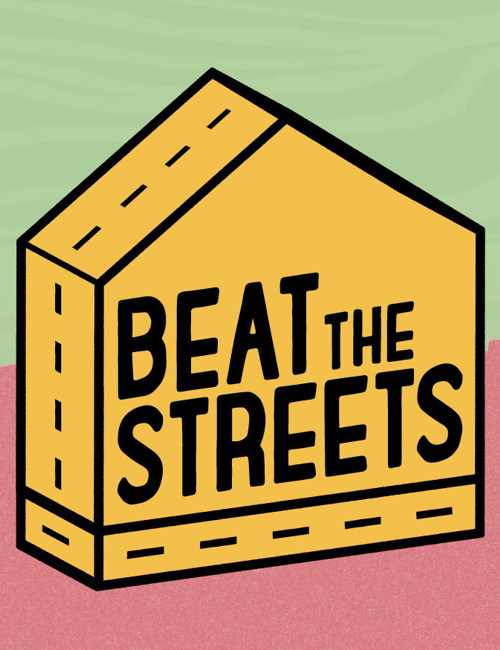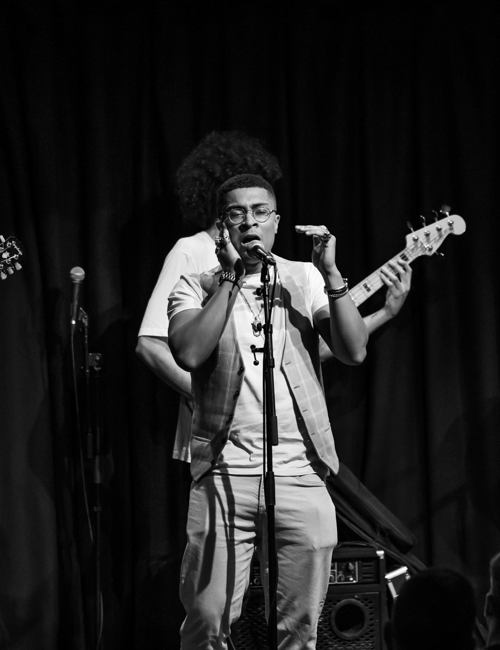
photo: Louise Clutterbuck
Could you explain how the Whistling Orchestra fits into your usual way of working?
I’ve been working with the voice for a few years now, looking at our relationships to places, and with each other in particular places, whether that’s a city like Nottingham or one particular building like Greyfriars in Lincoln. I’m very interested in the ways we often relate to each other without really thinking about it – without our communications being part of a conscious process. I approach the voice through what it can do without words.
Is your background entirely in visual art, or do you have some musical training?
I studied at Goldsmiths in visual arts, but I’ve always played and written music, as well as drawing and painting. At Goldsmiths, I found myself wanting to do more performance work, but the kind of work I was interested in was hard to do in an art school context. Making site-specific work involving lots of other people didn’t really fit into a university setting where the emphasis is on individual practice. Once I finished, I was able to expand into those things.
History, and especially social history, seems to play a big part in your work too…
I’m interested in how histories resonate in the ways we might inhabit a place, regardless of whether we have a strong feeling about it, because we’ve spent a long time there, or if it’s a more transient link. Often, I’m thinking about how we carry places with us, or how in the history of certain locations you’ll find certain behaviours being enacted repeatedly on the same site, as though there’s a remnant of something where the place affects what people do there in some way.
In this Nottingham project, was there anything in the city’s history that led you to whistling as the specific form of voice you wanted to explore?
I’d looked at the cultures of whistling as part of a project I did at Arnolfini in Bristol a year or so ago. I’d been looking at the power of the voice to connect people and came across snippets about ‘whistling languages’. I was also thinking about work songs as a form for expressions of community and protest. Almost as soon as I began my research I found stories about miners whistling on buses, and read John Lucas and Allan Chatburn’s book, A Brief History of Whistling. I also discovered that Sheila Harrod – an amazing, nationally-renowned whistling champion – lived nearby.
Have you found any evidence of the ‘whistling languages’ you mentioned? I think in John Lucas’s book he gives an example of resistance fighters in Italy using whistling to communicate...
It’s mostly been musical uses of whistling that I’ve found here, so far. Before I started, I kept hearing that people don’t really whistle any more, but I think I’ve become more tuned in and I notice that people do still whistle a lot. Only today I was walking behind someone who was whistling very loudly with headphones on. My real interest is that whistling is the most democratic form of music-making possible. You don’t need an instrument, you don’t even need a good voice.

photo: Louise Clutterbuck
Have you found that older people whistle more than younger people?
I picked up a lot of differences, some generational and cultural, some important ones around gender, too. Historically, it wasn’t the done thing for women to whistle. It was seen as common and there are lots of old songs and poems about the horror of having a ‘whistling wife’. This is something Sheila Harrod talks about, that what she did was seen as quite risqué back in the day.
What stories and material have you found about work songs in Nottingham?
I’ve had some sessions with Radford Care Group – an elderly residents group – and met people who worked at Player’s, Raleigh and other local factories. One common memory has been about the BBC going to a different factory each week to broadcast radio programmes. Some people also talked about how, as members of bands or as singers, they would perform lunch-hour concerts. This seemed to be common and some of the factories had proper stage setups and equipment.
The songs often reflected things that were happening in and around the city. I also learned from the Ex and Retired Miner’s Association that there is some great footage of miners’ songs – and that material sounds much more traditionally folky, in contrast to the material the BBC were broadcasting, which was designed to keep you working. The miners’ songs were sung after work, which allowed them to be more interesting musically than many of the things played in factories during working hours, which were subject to lots of restrictions.
Whistling and songs are often used for subtle subversion, as when somebody says something stupid and you might make a whistling noise to ridicule it without saying anything specific.
Yes, and often in songs you’ll find the lyrics got changed to be cheerfully offensive, and then the changed song would be whistled, so those who heard the tune but didn’t know the offensive words would think it was just a jolly little tune, while those who did know would get the hidden meaning. There are a few songs that were used like that. One that sticks in my head is ‘A-Tisket-A-Tasket’ where the ‘little yellow basket’ became a ‘bastard’.
In terms of the final Whistling Orchestra performance, do you know yet who is taking part?
We did an open call and about ten strong adult whistlers joined us, so they and Sheila Harrod will hold the main melody lines, making the spine of the piece. Then we’re working with Nottingham People’s Choir who will be doing the harmonies. We also have children from Mellors Primary School and they will be doing the percussion and other sounds, like clicking their tongues and blowing, but all using the mouth as an instrument.
A bit like beat boxing? I often hear kids making percussive sounds while listening to music, so maybe that’s partly supplementing whistling?
One thing someone mentioned to explain why whistling might be less common than it once was is that popular music might have become too complicated. A simple melody line can be whistled very easily, but the faster, more complex rhythms used in popular songs now can be percussive rather than melodic vocally – ‘uh huh ah’ or ‘ooh ooh ha’ rather than the simpler melodies of the songs the BBC were broadcasting in factories. But I’ve also noticed that whistling is often unconscious, and what we whistle often just tracks whatever is in the air. Listening to what people whistle is like having access to a snapshot archive of what parts from popular songs have really stuck in their minds.
Will the score be a one-off, dependent on the city as a location and its very particular history?
For me it is really special to create a short piece of music that is both about and made from Nottingham’s history and people, drawing on songs with a history and continuing presence here. We will be recording our performances – it can also be interesting to take these very site-specific works elsewhere. There have been other projects I’ve done around a particular neighbourhood or building, and when I’ve taken the work abroad, into a completely different, slightly random context, they still resonate with the sites, people and histories that shaped them.
The Whistling Orchestra Performace, Primary, Seely Road, NG7 1NU, Saturday 27 February, 3 - 4pm, free; Nottingham Contemporary, Tuesday 26 April, free.
A Brief History of Whistling by John Lucas and Allan Chatburn is published by Five Leaves.
We have a favour to ask
LeftLion is Nottingham’s meeting point for information about what’s going on in our city, from the established organisations to the grassroots. We want to keep what we do free to all to access, but increasingly we are relying on revenue from our readers to continue. Can you spare a few quid each month to support us?




